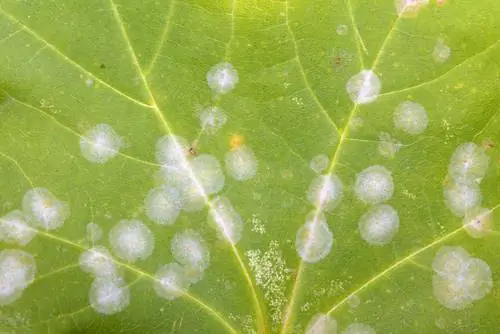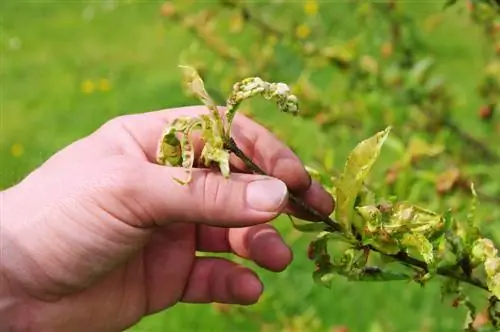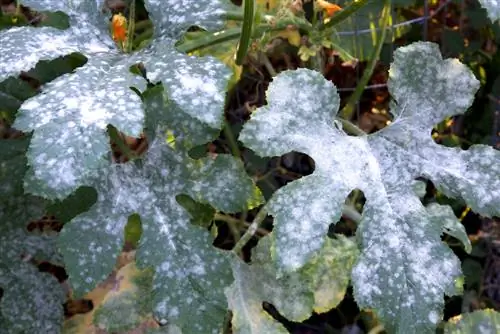- Author admin [email protected].
- Public 2023-12-16 16:46.
- Last modified 2025-01-23 11:22.
The Flaming Käthchen is considered a particularly robust plant that is rarely weakened by diseases or pests. However, this plant is not completely immune to the negative influences of nature. Mildew sometimes makes life difficult for this plant too.

How do you treat mildew on Flaming Cat?
If mildew is found on Flaming Käthchen, affected plant parts should be removed and disposed of immediately. Complete immunization is not possible, but regular care and inspection of the leaves supports plant he alth and minimizes the risk of infestation.
What helps Flaming Käthchen with mildew infestation?
If the Flaming Käthchen is affected by the annoying mildew,urgent care measures must be taken. This includes the meticulous removal of infected plant parts. The affected leaves should be completely removed. These can be removed and disposed of either with scissors or a sharp knife. You should work particularly carefully so as not to leave any residue behind. This could lead to a new outbreak of mildew infestation.
How do you recognize mildew on the Flaming Käthchen?
The Flaming Käthchen shows signs that are difficult to recognize in the first phase of fungal infestation. This makes combating it at the beginning of the disease almost impossible. The infestation only becomes noticeable whenwhitish or yellowish spots form on the leaves. Over time, these grow larger and eventually take up the entire leaf. In this case, the Flaming Käthchen requires urgent care measures. If you recognize the signs, do not wait to seek treatment. Therefore, intervene as early as possible.
Can the Flaming Cat be immunized against mildew?
Acomplete immunizationagainst mildew disease is unfortunatelynot possible However, you can strengthen your Flaming Käthchen with regular care measures. You should carefully inspect the leaves of the plant and pay attention to any changes such as wilting. The sooner you detect an infestation, the faster the Flaming Cat can recover. Also pay attention to the soil moisture. The soil should not be too wet, as mildew thrives and multiplies in a damp and dark environment.
Tip
How to tell which type of mildew your Flaming Cat is affected by
The type of mildew that has affected the Flaming Cat can be easily determined. “Downy mildew” occurs mainly in the cold season and discolors the leaves on both the bottom and top. “Powdery mildew”, on the other hand, occurs in the warm months and causes discoloration of the top of the leaves.






